Introduction
Transistors are the fundamental building blocks of modern electronic devices, serving as key components in countless applications, from amplifiers and oscillators to digital logic circuits. Among the myriad of transistors available, the 2N3906 stands out as a popular choice due to its versatility, reliability, and ease of use. To harness the full potential of this transistor, it is crucial to have a thorough understanding of its pinout configuration.
In this comprehensive guide, we delve into the intricacies of the 2N3906 transistor pinout, shedding light on its key features, pin assignments, and functionality. By the end of this article, you will have a solid grasp of the pinout configuration, enabling you to effectively utilize the 2N3906 transistor in your electronic projects.
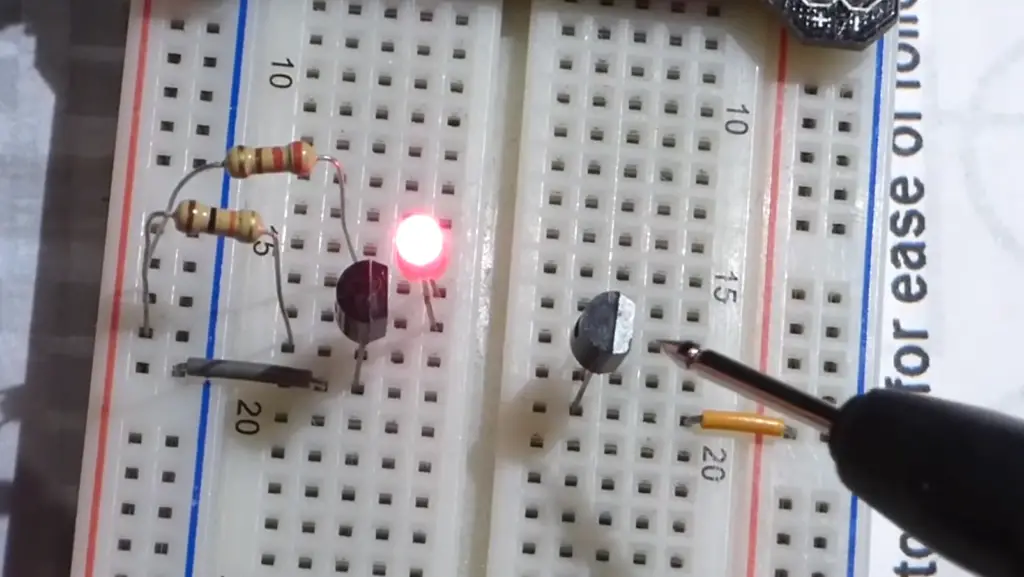
Understanding the pinout configuration of the 2N3906 transistor is vital for correct circuit design and implementation. The 2N3906 features three pins: the emitter (E), the base (B), and the collector (C). Each pin plays a critical role in determining the transistor’s behavior and electrical characteristics. The emitter is heavily doped to ensure efficient injection of majority carriers, while the base controls the transistor’s conductivity. The collector, on the other hand, collects and dissipates the majority of the current passing through the transistor [1].
Throughout this guide, we will explore the pin assignments of the 2N3906 transistor in detail, elucidating their functions and interconnections. We will also discuss various typical applications, highlighting the versatile nature of the 2N3906 and its impact on electronic circuit design.
The Guide To 2N3906 Transistor:
Working Principle of 2N3906 Transistor
Transistors are electronic devices that amplify or switch electronic signals and are crucial components in modern electronics. The 2N3906 transistor is a commonly used PNP (Positive-Negative-Positive) bipolar junction transistor (BJT) that operates based on the principles of semiconductor physics. Understanding its working principle is essential for utilizing it effectively in electronic circuits.
The 2N3906 transistor consists of three layers of semiconductor material: the emitter, the base, and the collector. These layers are doped with different impurities to create a specific conductivity type (N or P) in each layer. In the case of the 2N3906, the emitter is heavily doped P-type material, while the base is lightly doped N-type material and the collector is moderately doped P-type material.
When a positive voltage is applied to the base terminal with respect to the emitter, it causes a flow of current from the emitter to the base. This current consists of majority charge carriers (holes in the case of a PNP transistor) injected from the emitter into the base region. The base current controls the flow of current between the collector and the emitter. A small change in the base current can result in a much larger change in the collector current, making the transistor an effective amplifier [2].
How to Use a 2N3906 Transistor?
To effectively use a 2N3906 transistor in electronic circuits, it is essential to understand its pinout configuration and the appropriate connection methods. The 2N3906 transistor features three pins: the emitter (E), the base (B), and the collector (C). These pins have specific functions and must be connected correctly for proper operation.
The emitter pin is typically connected to the negative (ground) terminal of the power supply or the common reference point in the circuit. The base pin is connected to the input signal source or the controlling element of the circuit, such as a microcontroller or another transistor. The collector pin is connected to the load or output of the circuit.
It is important to note that the 2N3906 is a PNP transistor, which means that the base current should be negative (flowing into the base terminal) for it to operate properly. This is in contrast to NPN transistors where the base current is positive. Care must be taken to ensure the correct orientation of the transistor when connecting it to a circuit.
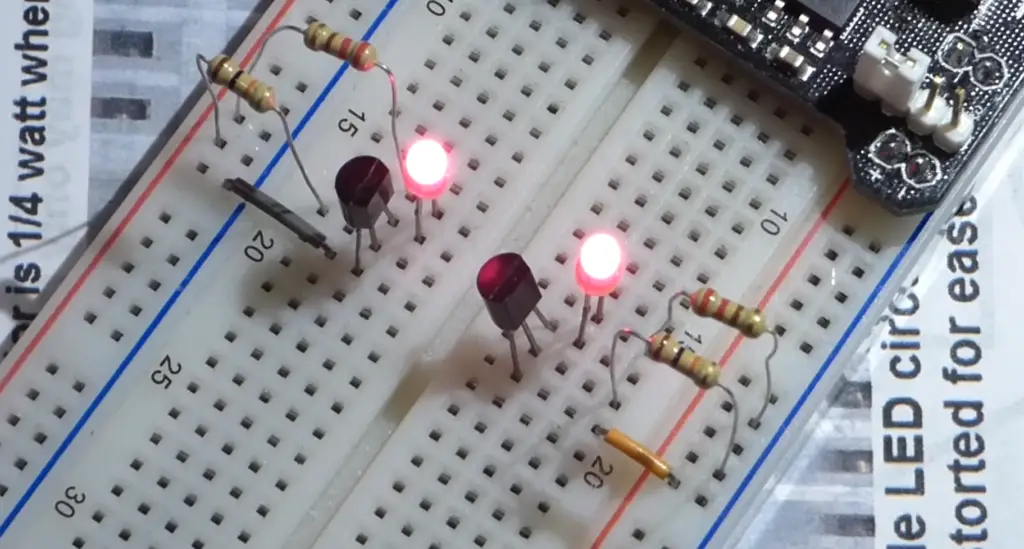
Characteristics of 2N3906 Transistor
The 2N3906 transistor exhibits several important characteristics that determine its performance and suitability for different applications.
Understanding these characteristics is crucial for selecting the transistor and designing circuits with optimal performance:
- Bipolar PNP Transistor: The 2N3906 is a PNP transistor, which means it is constructed using P-type material for the majority of its layers. This determines the flow of current and the polarity of voltages in the transistor;
- Collector-Emitter Maximum Voltage: The maximum voltage that can be applied between the collector and emitter pins without damaging the transistor is an important parameter. For the 2N3906, this value is typically around 40V;
- Emitter Base Maximum Voltage: The maximum voltage that can be applied between the emitter and base pins without causing breakdown is another important parameter. In the case of the 2N3906, this value is usually around 5V;
- Collector Base Maximum Voltage: The maximum voltage that can be applied between the collector and base pins without causing breakdown is another critical characteristic. For the 2N3906, this value is typically around 40V;
- Continuous Collector Current: The maximum current that can flow through the collector pin without damaging the transistor is an essential characteristic to consider. The 2N3906 transistor can typically handle a continuous collector current of up to 200 mA, which makes it suitable for a wide range of low-power applications;
- Junction Operating Temperature Range: The range of temperatures within which the transistor can operate reliably is an important consideration. The 2N3906 transistor is designed to function within a junction temperature range of -67F to 302F, allowing it to withstand a variety of environmental conditions;
- Minimum Forward Current Transfer Ratio: The minimum forward current transfer ratio, also known as hFE or DC current gain, indicates the amplification capability of the transistor. For the 2N3906, the hFE value typically ranges from 100 to 300, indicating that a small change in base current can result in a larger change in collector current;
- Transition Frequency: The transition frequency, denoted as ft, is the frequency at which the transistor’s current gain begins to decrease. The 2N3906 transistor typically has a transition frequency of around 150 MHz, making it suitable for low-frequency applications [3];
- Maximum Collector Current: The maximum collector current specifies the highest current that the transistor can handle without being damaged. The 2N3906 transistor has a maximum collector current of 200 mA, ensuring its suitability for low-power applications;
- Collector Capacitance: The collector capacitance, also known as Cob, represents the capacitance between the collector and the base when the emitter is open. It is an important parameter for high-frequency applications. For the 2N3906, the collector capacitance is typically around 5 pF;
- Maximum Power Dissipation: The maximum power dissipation indicates the maximum amount of power that the transistor can dissipate without exceeding its operating temperature limits. The 2N3906 transistor has a maximum power dissipation of 625 mW, allowing it to handle moderate power levels;
- Storage Temperature Range: The storage temperature range specifies the temperatures at which the transistor can be safely stored without affecting its performance or reliability. For the 2N3906, the recommended storage temperature range is typically between -85F to 302F;
- Collector-Emitter Saturation Voltage: The collector-emitter saturation voltage refers to the voltage drop between the collector and emitter when the transistor is fully turned on. In the case of the 2N3906, the collector-emitter saturation voltage is typically around 0.2V, indicating a low voltage drop during saturation;
Advantages of 2N3906 Transistor
Additionally, it has a high current gain and a breakdown voltage of up to 40 volts, making it suitable for many different types of applications.

However, like all transistors, it also has limitations and potential drawbacks, such as susceptibility to damage from electrical and thermal events, and limitations in electron mobility for high-power, high-frequency operation.
Disadvantages of 2N3906 Transistor
The 2N3906 transistor is a commonly used PNP bipolar junction transistor, and like any electronic component, it has advantages and disadvantages.
One potential disadvantage of the 2N3906 is its relatively low maximum operating frequency, which may limit its use in high-frequency applications.
Another potential drawback is its low collector-emitter voltage rating, which may make it unsuitable for high-voltage applications. Additionally, like all transistors, it is susceptible to damage from electrical and thermal events, and it may require certain biasing and operating conditions to function optimally in a given circuit.
However, it is important to note that these limitations are not unique to the 2N3906 and are instead typical of many similar bipolar junction transistors. In many applications, the advantages of the 2N3906 (such as its availability in plastic packaging, compatibility with a wide range of electronic circuits, and a high current gain) may outweigh its limitations, making it a suitable choice for low-power amplifying or switching applications [4].
Applications of 2N3906 Transistor
The 2N3906 transistor, with its versatile characteristics and reliable performance, finds applications in a wide range of electronic circuits.
Here are some common applications where the 2N3906 transistor is utilized:
- Amplifiers: The 2N3906 transistor is commonly used in audio amplification circuits. Its ability to provide amplification and its low-power capabilities make it suitable for small audio amplifiers, such as headphone amplifiers and audio preamplifiers;
- Switching Circuits: The 2N3906 transistor can be used as a switch in digital logic circuits or other applications where the control of high currents or voltages is required. By properly biasing the base-emitter junction, the transistor can be turned on or off, allowing or blocking current flow through the collector-emitter path;
- Voltage Regulation: The 2N3906 transistor can be used in voltage regulator circuits, especially for low-power applications. By configuring the transistor as part of a voltage divider circuit or a series pass element, it can help regulate the output voltage and maintain stable power supply levels;
- Oscillators: The 2N3906 transistor can be utilized in the design of oscillators, which generate periodic waveforms. By incorporating the transistor in feedback configurations, such as Colpitts or Hartley oscillators, it helps in generating stable and reliable oscillations;
- Current Sources and Sinks: The 2N3906 transistor can be employed as a current source or sink in electronic circuits. By controlling the base current, the transistor can regulate the current flowing through the collector, making it useful in applications such as biasing circuits or current mirrors;
- LED Drivers: The 2N3906 transistor can be used as a driver for LEDs (Light-Emitting Diodes). By controlling the current flowing through the LED, it ensures proper operation and brightness control in lighting applications;
- Motor Control: The 2N3906 transistor can be utilized in motor control circuits, especially for small DC motors. By using the transistor as a switching element, it can control the current flow to the motor, enabling speed control or direction reversal;
- Logic Level Shifting: The 2N3906 transistor can be employed in level-shifting circuits, where it helps convert signals between different voltage levels. By appropriately configuring the transistor as a switch, it enables the translation of digital signals between different logic families or voltage levels [5];
2N3906 Transistor as a Switch
The 2N3906 transistor is commonly used as a switch in electronic circuits due to its ability to control the flow of current between the collector and emitter. When properly biased, it can be turned on or off, allowing or blocking current flow through the transistor.

Let’s explore how to use the 2N3906 transistor as a switch:
1) Common-Emitter Configuration
In the common-emitter configuration, the emitter terminal of the transistor is connected to the ground (negative terminal of the power supply), the collector terminal is connected to the load or output, and the base terminal is used to control the transistor.
To turn the transistor on (conducting state), a sufficiently positive voltage must be applied to the base terminal with respect to the emitter. This positive voltage allows a current to flow from the base to the emitter, creating a forward bias on the base-emitter junction. This biasing causes the transistor to enter its active region, allowing current to flow from the collector to the emitter.
To turn the transistor off (non-conducting state), the base-emitter junction should be reverse-biased or have a voltage close to zero. This prevents current from flowing from the base to the emitter, resulting in the transistor being in a cutoff state, where minimal or no current flows through the collector-emitter path [6].
By controlling the voltage or current applied to the base terminal, the 2N3906 transistor can be used to switch on or off a load connected to the collector terminal.
2) Common-Collector Configuration
In the common-collector configuration, the collector terminal of the transistor is connected to the ground, the emitter terminal is connected to the load or output, and the base terminal is used for control.
The common-collector configuration, also known as an emitter follower, provides a high input impedance and low output impedance. This configuration is useful when there is a need for voltage amplification or impedance matching.
To use the 2N3906 transistor as a switch in the common-collector configuration, the base-emitter junction is forward-biased by applying a sufficiently positive voltage to the base terminal with respect to the emitter. This causes the transistor to enter its active region, allowing current to flow from the emitter to the collector. The load or output is connected to the emitter terminal, and the current flowing through the load is controlled by the base current.
By controlling the base current, the 2N3906 transistor can effectively switch the load on or off.
It is important to consider the maximum ratings of the 2N3906 transistor, such as maximum collector current and power dissipation, to ensure that it can handle the load requirements without exceeding its limitations.
When using the 2N3906 transistor as a switch, it is advisable to use appropriate base resistors to limit the base current and ensure proper operation. Additionally, protection diodes, such as a flyback diode, may be required when switching inductive loads to prevent voltage spikes.
2N3906 Transistor as an Amplifier
If you’re planning to use the 2N3906 transistor as an amplifier, it is important to note that its DC current gain (hFE) varies between 100 to 300, which is somewhat low when compared to many modern amplification transistors. This means that it may not be suitable for all amplifier applications, especially those requiring high levels of gain. However, it can still be useful for low-power amplification applications in which moderate gain is sufficient, or when used in conjunction with other amplification components.
To use the 2N3906 as an amplifier, you should bias the transistor in the active region by applying an appropriate input voltage and utilizing the proper load and coupling components. It is also important to ensure that the operating conditions, such as voltage and temperature, are within the device’s specified tolerances to prevent damage or improper performance [7].
As with any amplifier design, careful attention to component selection, circuit layout, and environmental factors is crucial to ensuring optimal performance and reliability. Consulting a datasheet and seeking guidance from a qualified engineer or technician can also be helpful in designing an effective amplifier circuit using the 2N3906 transistor.
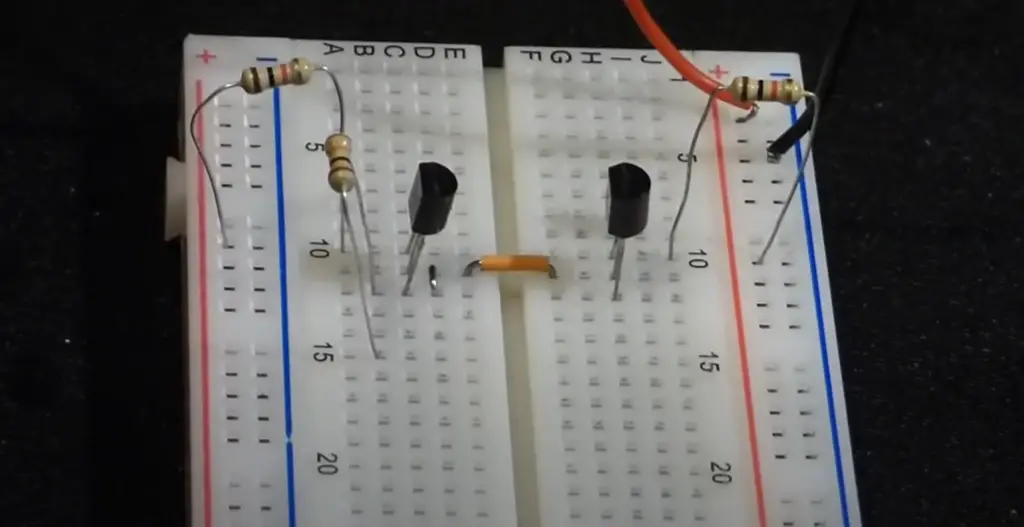
About 2N3906 Pinout:
2N3906 Pinout Diagram
The 2N3906 transistor typically features three pins: the emitter (E), the base (B), and the collector (C). A pinout diagram visually represents the physical layout and connectivity of these pins. It provides a clear understanding of how the pins are arranged and their corresponding functions.
In the case of the 2N3906, the emitter is usually the leftmost pin, followed by the base pin in the middle, and the collector pin on the right. The pinout diagram helps in identifying the correct orientation and placement of the transistor in a circuit.
2N3906 Pin Configuration
Understanding the functions of each pin is crucial for the proper connection and operation of the 2N3906 transistor. Here is a breakdown of the pin configuration:
- Emitter (E): The emitter pin is typically denoted as “E” and is responsible for emitting the majority of charge carriers (holes in the case of a PNP transistor) into the base region. It is connected to the negative (ground) terminal of the power supply or the common reference point in the circuit;
- Base (B): The base pin is labeled as “B” and controls the flow of current between the collector and emitter. By applying a suitable current or voltage to the base, the transistor can be turned on or off. The base pin is connected to the input signal source or the controlling element of the circuit, such as a microcontroller or another transistor;
- Collector (C): The collector pin is denoted as “C” and collects the majority of charge carriers injected by the emitter. It is connected to the load or output of the circuit. The collector pin is responsible for delivering the current from the transistor to the load;
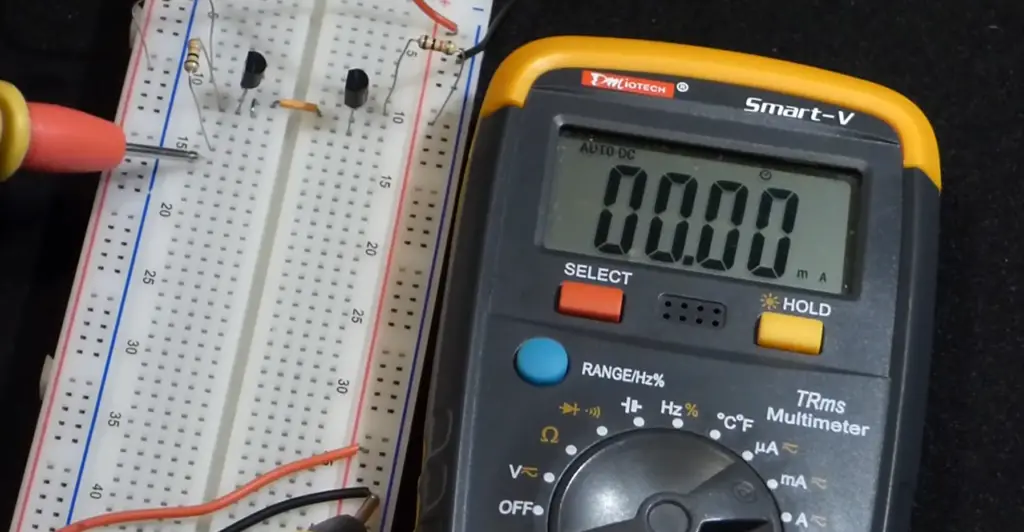
Where And How to Use 2N3906?
Here are some common scenarios where the 2N3906 transistor can be utilized:
- Amplifiers: The 2N3906 transistor is frequently used in audio amplification circuits. It can be employed to amplify weak audio signals, such as those from microphones or musical instruments, to a level suitable for driving speakers or headphones;
- Switching Circuits: Due to its ability to control current flow, the 2N3906 transistor can function as a switch. It can be employed in digital logic circuits, where it acts as an interface between low-power control signals and higher-power loads. For example, it can be used to switch on or off LEDs, relays, or motors;
- Voltage Regulation: The 2N3906 transistor can be incorporated into voltage regulator circuits. By using it as a series pass element or in conjunction with other components, it helps stabilize and regulate the output voltage, ensuring a constant power supply for other circuit components;
- Oscillators: The 2N3906 transistor is suitable for oscillator circuits that generate periodic waveforms. It can be employed in various oscillator configurations, such as the Colpitts or Hartley oscillators, to generate stable oscillations for applications like clock signals or frequency generation;
- Current Sources and Sinks: The 2N3906 transistor can serve as a current source or sink in electronic circuits. It can be used to bias other components or generate a steady current. This is useful in applications such as biasing circuits, current mirrors, or active loads;
- Logic Level Shifting: The 2N3906 transistor can be employed in level-shifting circuits, where it enables the conversion of signals between different voltage levels. It acts as an interface between different logic families or voltage domains, ensuring compatibility between different circuit sections;
- Voltage-controlled Oscillators (VCOs): The 2N3906 transistor can be used in VCO circuits, where the frequency of the generated waveform is controlled by a voltage input. It enables the generation of frequency-modulated signals and is commonly used in applications such as FM radio transmitters;
- Audio Pre-Amplification: The 2N3906 transistor can be utilized in audio pre-amplifier circuits. It helps boost the weak audio signals from sources like microphones or musical instruments before further amplification or processing;
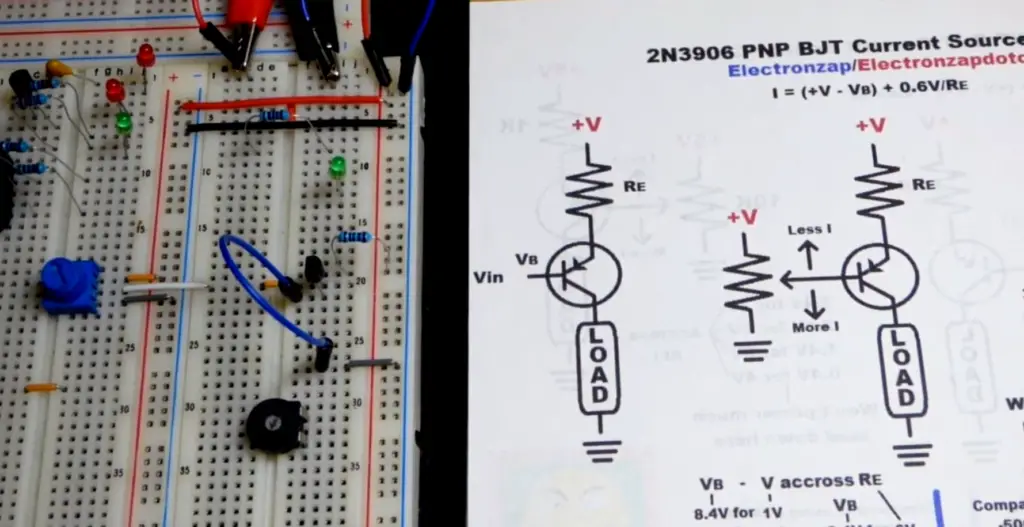
How to Safely Long Run 2N3906 in a Circuit?
To safely run a 2N3906 transistor in a circuit for a long period of time, it is important to ensure that the operating conditions, such as the voltage and temperature, are within the device’s specified tolerances. Additionally, it is important to select appropriate load and coupling components to prevent excessive stress on the transistor.
To increase the performance and lifespan of the transistor, it is recommended to stay below its maximum power dissipation rating, which is typically around 625mW for a TO-92 packaged 2N3906. In addition, it is generally recommended to limit the operating temperature of the device to below 302F, to prevent damage or failure.
It is also important to note that proper biasing is crucial for the safe and effective operation of the 2N3906 transistor in amplifiers or switching applications. The transistor should be biased in the active region to ensure minimal distortion and maximum power transfer.
Lastly, if you are unsure about the proper usage or limitations of the 2N3906 transistor in your specific circuit, consulting a datasheet and seeking guidance from a qualified engineer or technician can be helpful in ensuring optimal performance and maximizing the lifespan of the device.
How to Get Long-Term Performance with 2N3906?
To get long-term performance with the 2N3906 transistor, it is important to follow a few best practices:
- Use the transistor within its specified operating conditions: As mentioned earlier, it is important to ensure that the operating conditions, such as voltage and temperature, are within the device’s specified tolerances. Operating the transistor outside of its specified parameters can lead to damage or failure;
- Stay within the maximum power dissipation rating: To avoid overheating or thermal failure, it is important to limit the amount of power the transistor is subjected to. Staying below the maximum power dissipation rating of the transistor can extend its lifespan and prevent damage;
- Properly bias the transistor: The 2N3906 transistor should be biased in the active region to ensure minimal distortion and maximum power transfer. Proper biasing can also prevent thermal breakdown and improve the transistor’s performance;
- Check the datasheet for reliability data: Many datasheets will provide reliability and longevity data for the transistor. By understanding the expected lifespan of the device, you can plan for appropriate maintenance and replacements to ensure continued long-term performance;
- Avoid stress on the transistor: Properly selecting load and coupling components, and avoiding excessive voltage or current fluctuations can prevent undue stress on the transistor, which can lead to early failure;
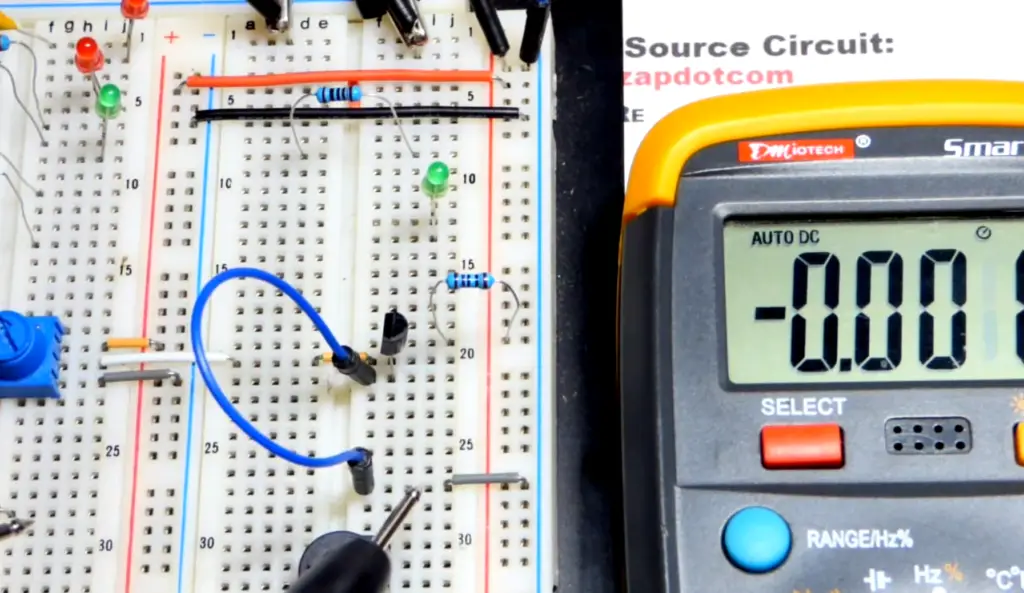
2N3906 vs BC557 – What Is The Difference?
The 2N3906 and BC557 are both popular transistors commonly used in electronic circuits. While they are similar in some respects, there are key differences between the two.
Let’s explore the differences between the 2N3906 and BC557 transistors:
1) Polarity and Type:
- 2N3906: The 2N3906 is a PNP (Positive-Negative-Positive) bipolar junction transistor. In a PNP transistor, the majority of charge carriers are holes;
- BC557: The BC557 is also a PNP transistor, similar to the 2N3906. It operates in the same PNP configuration;
2) Pinout and Package:
- 2N3906: The pinout and package of the 2N3906 transistor follow the standard TO-92 package, which includes three pins: emitter, base, and collector;
- BC557: The BC557 transistor also uses the TO-92 package with the same pin configuration as the 2N3906: emitter, base, and collector;
3) Maximum Ratings and Characteristics
The 2N3906 and BC557 transistors have slightly different maximum ratings and characteristics. These values may vary depending on the manufacturer, so it is important to refer to the specific datasheets for accurate information.
4) Gain (hfe) and Current Ratings
The gain or current transfer ratio (hfe) of the 2N3906 transistor typically ranges from 100 to 300.
The BC557 transistor typically has a gain range (hfe) of 110 to 800.
5) Voltage Ratings
The collector-emitter voltage (VCEO) for the 2N3906 transistor is usually around 40V.
The BC557 transistor typically has a higher collector-emitter voltage rating (VCEO) of around 45V.
It is worth noting that while the basic functionalities of the 2N3906 and BC557 transistors are similar, their specific characteristics, ratings, and parameters may vary. Therefore, it is crucial to consult the datasheets provided by the manufacturers to ensure proper selection and utilization of the transistor in a specific circuit.
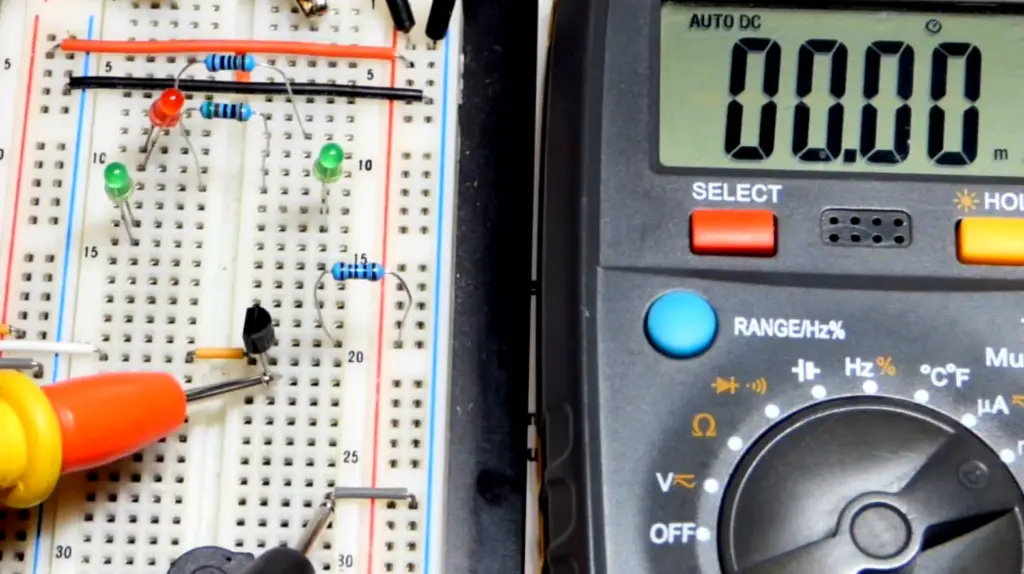
FAQ
1. What is the alternative to 2N3906?
An alternative to the 2N3906 transistor is the BC557. The BC557 is also a PNP transistor with similar characteristics and pinout configuration. While there may be slight differences in performance and specifications, the BC557 can often be used as a substitute for the 2N3906 in many circuits.
2. What is the difference between 2N3904 and 2N3906?
The main difference between the 2N3904 and 2N3906 transistors lies in their polarity and type. The 2N3904 is an NPN (Negative-Positive-Negative) transistor, whereas the 2N3906 is a PNP (Positive-Negative-Positive) transistor. This difference in polarity determines the flow of majority charge carriers (electrons for NPN and holes for PNP) and the direction of current flow in the transistor.
3. How does a 2N3906 transistor work?
The 2N3906 transistor operates based on the principles of a bipolar junction transistor (BJT). In a PNP transistor like the 2N3906, a positive voltage applied to the base terminal with respect to the emitter terminal allows a current to flow from the base to the emitter.
This forward biases the base-emitter junction and creates a low-resistance path between the collector and emitter, allowing current to flow through the transistor. Conversely, a reverse bias or no voltage at the base terminal blocks the current flow and turns the transistor off.
4. What is the spec of 2N3906?
The specifications (specs) of the 2N3906 transistor may vary depending on the manufacturer, but some common specifications include:
- Collector-Emitter Voltage (VCEO): Typically around 40V;
- Emitter-Base Voltage (VEBO): Usually around 5V;
- Collector Current (IC): Typically ranges from 200mA to 500mA;
- Power Dissipation (PD): Commonly around 625mW;
- DC Current Gain (hfe): Typically ranges from 100 to 300;
- Transition Frequency (fT): Generally around 250MHz;
- Package Type: Usually TO-92 [8];
5. Is 2N3906 NPN or PNP?
The 2N3906 transistor is a PNP (Positive-Negative-Positive) bipolar junction transistor. In a PNP transistor, the majority of charge carriers are holes, and current flows from the emitter to the collector when the base-emitter junction is forward-biased.
6. What is the switching speed of 2N3906?
The switching speed of the 2N3906 transistor is typically in the range of tens to hundreds of nanoseconds. It is influenced by factors such as the load connected to the transistor, the biasing, and driving circuitry, and the specific operating conditions. For precise information on the switching speed, it is advisable to refer to the transistor’s datasheet or contact the manufacturer.
7. Can I use 2N2222 instead of 2N3904?
Yes, in many cases, the 2N2222 transistor can be used as a substitute for the 2N3904. Both transistors are NPN bipolar junction transistors with similar pinouts and characteristics. However, it is important to review the specific requirements of the circuit and consult the datasheets of the transistors to ensure compatibility and proper operation.
8. Can I use BC547 instead of 2N3904?
The BC547 can be used as a replacement for the 2N3904 without a significant difference in performance.
9. What replaces a 4401 transistor?
The 2N4401 is a common NPN transistor that can be replaced by a variety of substitutes depending on the specific requirements of the circuit. Some alternatives to consider include the BC337, BC547, or 2N2222.
10. What is the difference between 2N2222 and 2N4401?
While both transistors have a similar NPN-type configuration, the 2N2222 has a higher maximum collector current and power dissipation rating than the 2N4401. Additionally, the 2N2222 has a lower maximum voltage rating than the 2N4401.
11. Can I replace a transistor with any other transistor?
While it is possible to replace a transistor with another similar transistor, it is generally recommended to select a replacement transistor with similar or improved maximum ratings, such as voltage, current, power dissipation, and speed.
12. What can replace 2N5401?
The 2N5401 is a PNP transistor with a high voltage rating, low noise, and low distortion properties. Some possible substitutes for the 2N5401 include the BC559, BC327, 2N3906, or 2N4236, depending on the specific circuit requirements. However, it is important to consult the datasheet and relevant specifications to ensure compatibility and optimal performance.
Useful Video: 2N3904 and 2N3906 Bipolar Transistors
References
- https://www.etechnophiles.com/2n3906-transistor-pinout-datasheet/
- https://www.onsemi.com/pdf/datasheet/2n3906-d.pdf
- https://www.electronicshub.org/2n3906-transistor/
- https://www.componentsinfo.com/2n3906-transistor-pinout-details-equivalent/
- https://envirementalb.com/2n3906-pinout-features-alternate
- https://www.apogeeweb.net/circuitry/2N3906-pnp-transistor-introduction.html
- https://components101.com/transistors/2n3906-pinout-equivalent-datasheet
- https://microcontrollerslab.com/2n3906-pnp-transistor-pinout-example-datasheet-applications/





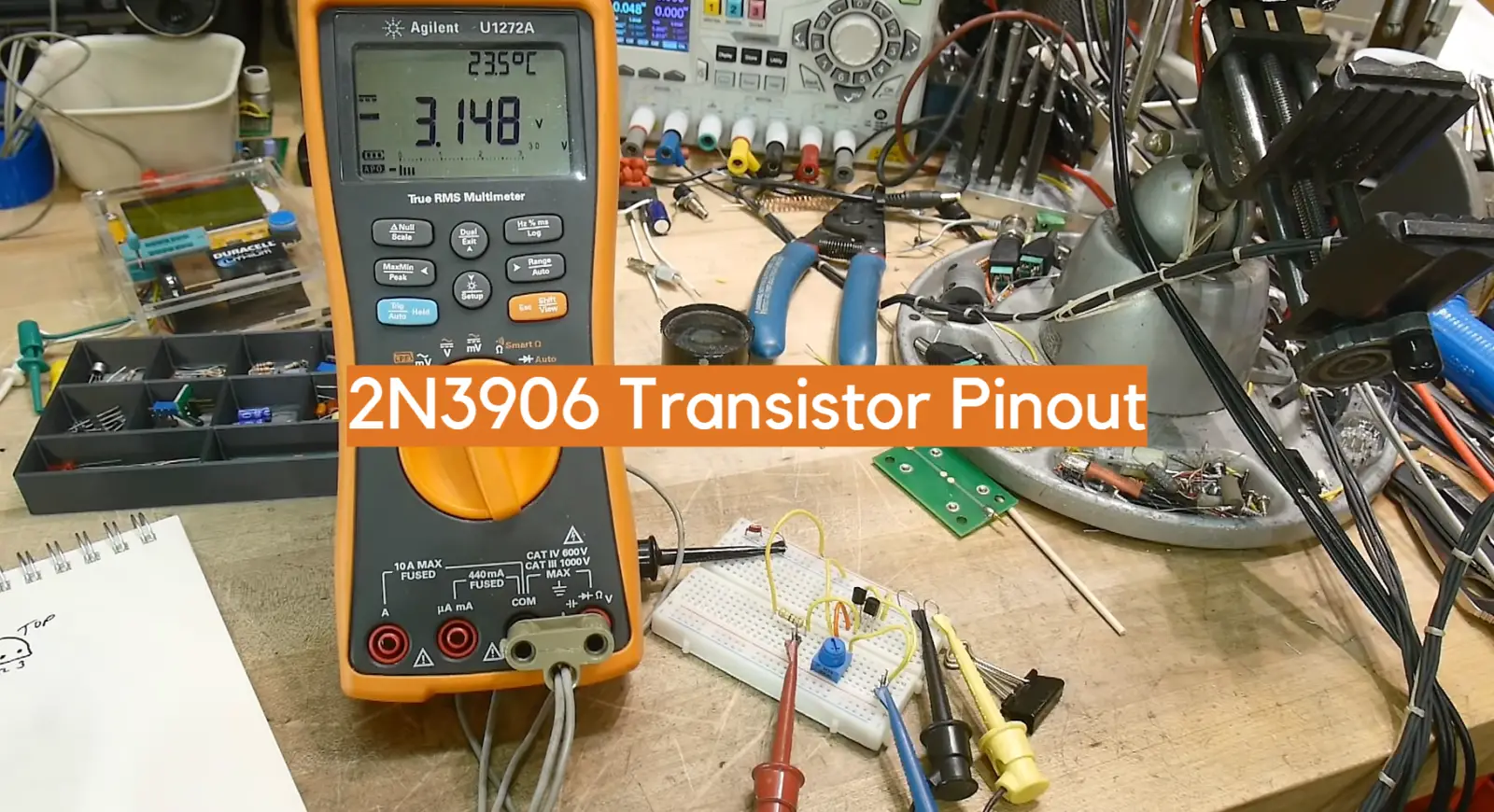




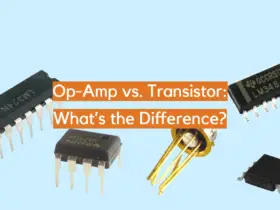
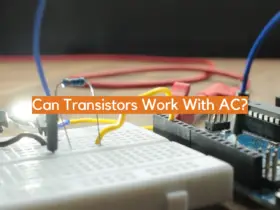
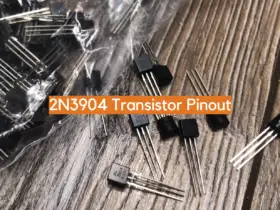

Leave a Reply